category: simple drawn thread filling pattern
linen used: 13.5/cm thread-count
threads used: coton à broder No. 20 for the Four-Sided and No. 16 for the Peaholes
stitches used: Four-Sided stitches and a variation of wrapped Peaholes
horizontal center axis: double withdrawn thread line
The pomegranate motifs come from the Schwalm parade cushion border (B).
As you can see from the two pictures with the original embroidery, the pattern has been worked slightly differently.
Actually it is a variation of the wrapped Peahole,
which can be seen here from the front
and back.
The main difference is the use of thicker thread and additional wrapping of the ends of adjacent bundles of threads.
From this I derived a variation that does not fully correspond to the original, but comes very close.
The pattern shown below is a practice exercise only.
It makes sense to start thread withdrawing in the middle. Here I first have withdrawn the middle pair of threads and then removed 5 more fabric threads on each side, so a total of 12 threads.
Four threads are now alternately left on both sides of the withdrawn thread line and another is withdrawn.
Four-Sided stitches (coton à broder No. 20) are embroidered from the back over the four remaining threads, each bundling 4 fabric threads.
Using coton à broder No. 16 the resulting bundles of threads are wrapped and joined together into Peaholes.
Start with the right bundle of threads and wrap – from bottom to top – around it 12-14 times. The wrapping thread should lie evenly next to each other and should be the same in number across all thread bundles.
*The thread is slide under the crosses of the Four-Sided stitches to the next bundle of threads.
Now wrap from top to bottom. First, the unprocessed bundle and the one to the right of it are joined together by two wrappings.
Then continue to wrap the left bundle of threads until you reach the bottom edge.
There the two thread bundles are pulled together again by two wrappings
and the thread is slide under the crosses of the Four-Sided stitches to the next bundle of threads.
Again wrap from bottom to top, but this time only up to the middle. There, the partially unprocessed bundle of threads and the bundle of threads to the right of it are tightly pulled together with two wrappings.
Then the left thread bundle is wrapped until reaching the upper edge.*
The steps (*) are repeated, on the way down the bundles of threads are joined together at the edges
and on the way up in the middle.
From the front, it looks like this:
Then the remaining area is filled with Four-Sided stitches.
A pretty pattern – particularly suitable for long, narrow motifs – is established.
I have noticed that the variant of the peaholes, which are also wrapped together at the edges, makes working the folded peahole edging much easier.
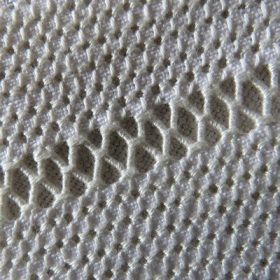
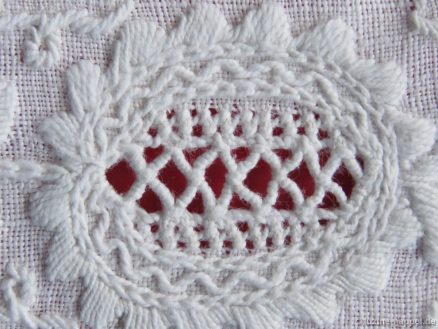
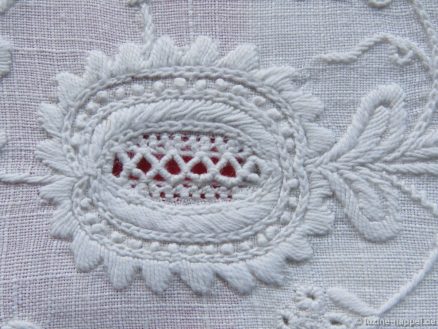
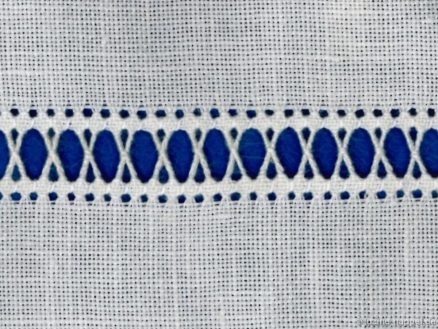
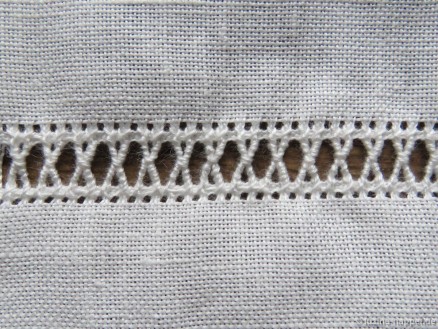
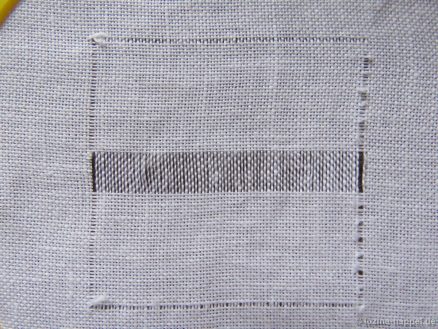
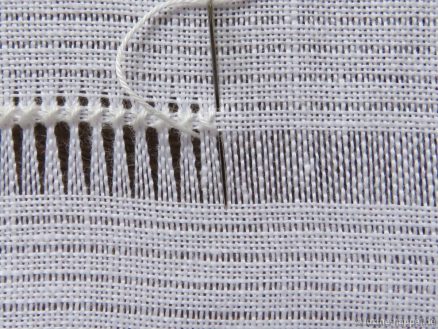
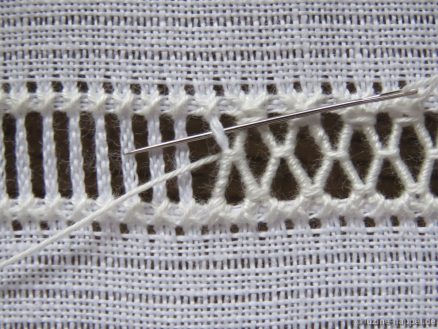
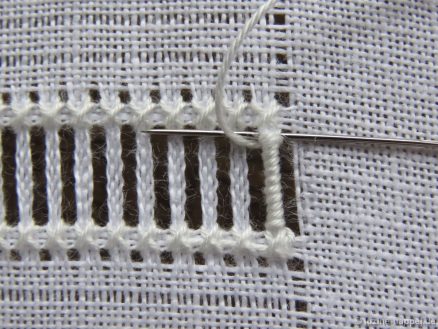
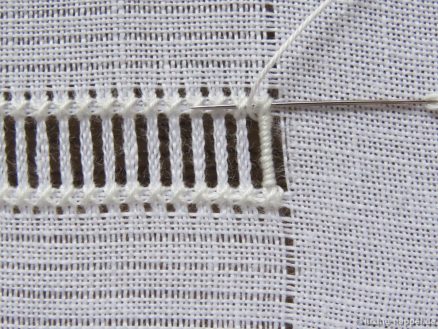
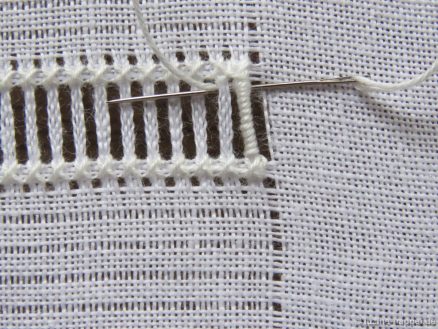
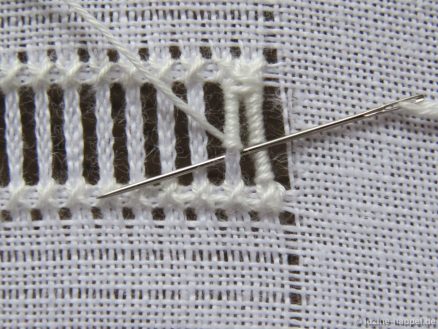
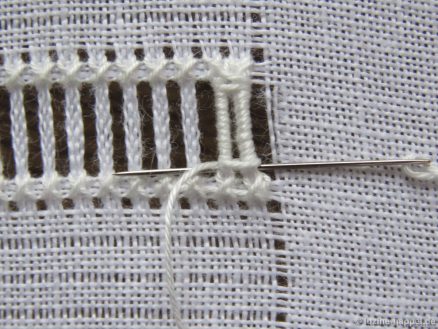
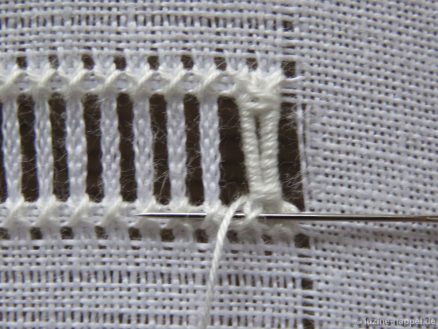
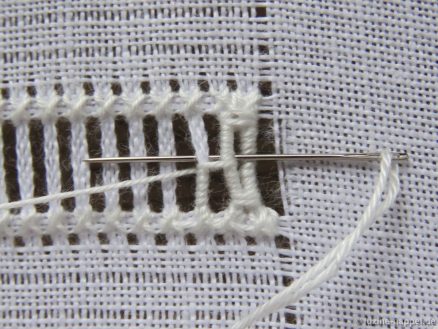
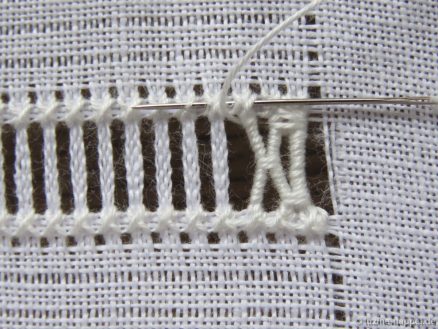
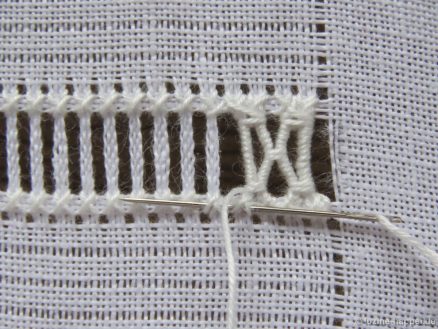
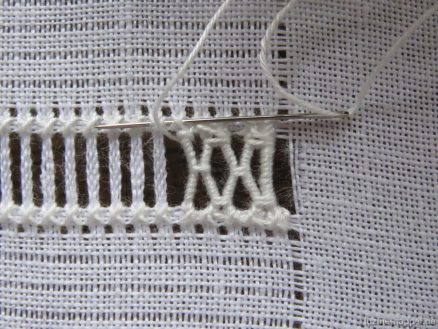
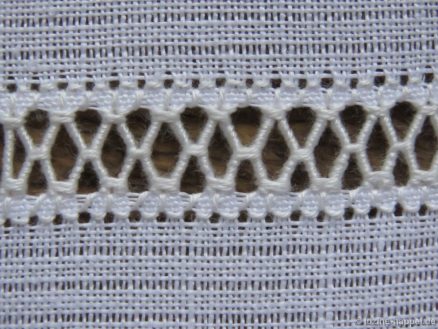
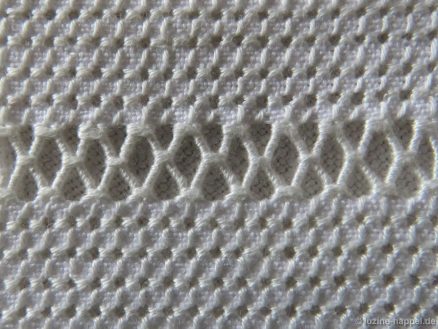
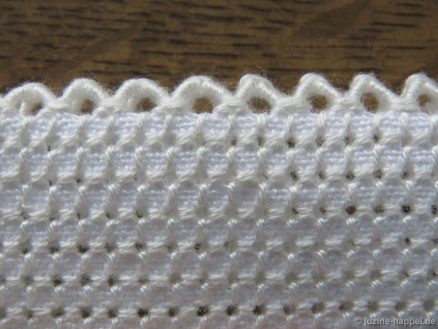


Leave a Reply